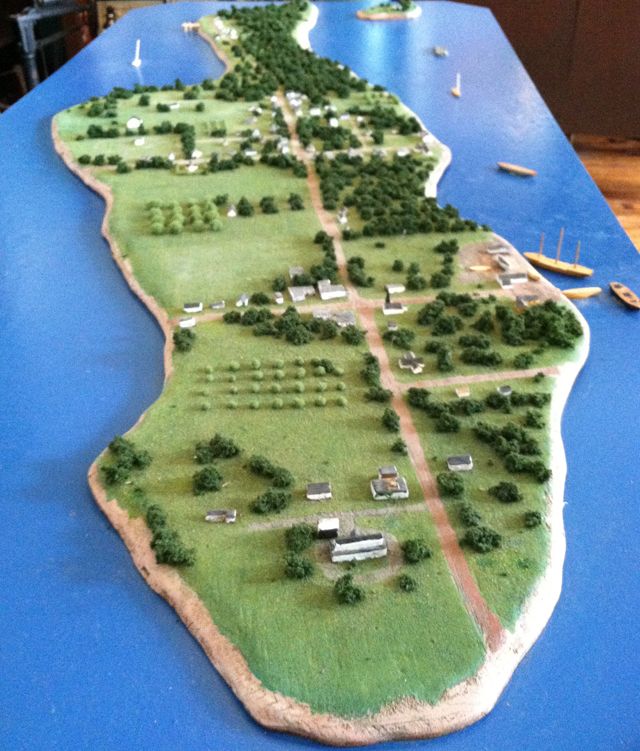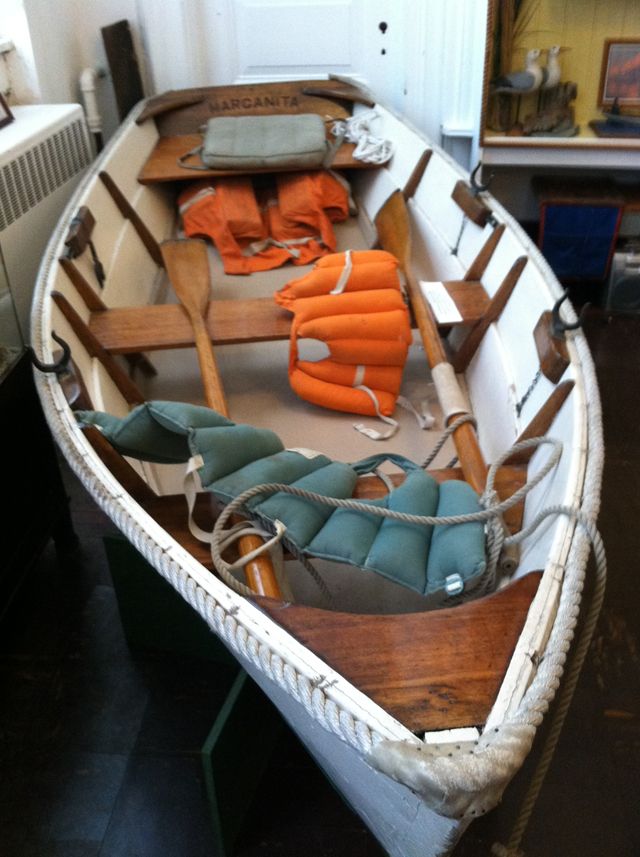Last-Minute NYC Holiday Gift Guide 🎁
We’ve created a holiday gift guide with presents for the intrepid New Yorker that should arrive just in time—


The sheer adorableness of the City Island Nautical Museum is not to be underestimated. On a recent misty Saturday afternoon, the entryway teemed with cheerful volunteers seemingly all named Barbara. The four Barbaras are in fact local celebrities on City Island, where they are known as the “Barbarashop Quartet” (yes, really) and celebrated for their preservation advocacy efforts.
In January 2012, the building which houses the Museum, a former public school, was designated a landmark by the NYC Landmarks Preservation Commission, because of its “special character and a special historical and aesthetic interest and value as part of the development, heritage and cultural characteristics of New York City.” Despite its landmark status, volunteers pointed out that the building is in need of restoration; in particular, the exterior stairs are cracked and in poor condition.
The announcement of the Partners in Preservation initiative has made headlines on City Island and stirred up excitement. The Barbaras and other staff have galvanized the community to celebrate the Museum, where the story of the island’s fascinating maritime history unfolds.

City Island boasts an extensive maritime history, proudly displayed at the Museum.
City Island was settled by Europeans in the early 1600s, and remained in private hands until the end of the 1700s. In the early nineteenth, many of City Island’s residents were fishermen, taking advantage of the then prospering oyster industry. By mid-century the oyster industry began to fail, and in 1862, the first shipyard was established.
In the years following the Civil War, as recreational maritime travel rapidly increased in popularity, the island took advantage of its advantageous location just north of New York City and developed into a substantive industry hub for the construction and rebuilding of ships and luxury yachts. City Island remained an important shipbuilding and yachting center into the twentieth century and through the two world wars, during which the shipbuilders were in high demand to build war craft and tug boats.

The Museum’s exhibits include a wide array of artifacts and objects that bring the island’s history to life.
In the second half of the twentieth century, the yachting industry returned. As the exhibits and volunteers at the Museum will proudly tell you, City Island shipbuilders built several sailboats that won in America’s Cup races throughout the later decades of the last century.
The Museum works hard to breathe life into this little known history. In one room, photographs along with boat models, and restored boats and boat parts showcase the island’s long, proud building industry. Another room showcases historic documents, maps and other objects that help illustrate the story of the island’s nautical history. In the hallway are historic photographs of the island and the members of its many nautical clubs.
The Museum is operated by the City Island Historical Society, and is funded by donations, grants, and membership dues; admission is free. The staff are all volunteers, who knowledgeably share pieces of City Island history with visitors. This Museum embodies the need to celebrate and preserve smaller, lesser-known historical sites in New York City, where little known local histories emerge and are lovingly told.
Funding from Partners in Preservation would restore the steps to the Nautical Museum which have deteriorated over the past 112 years. The original design would be restored and a handicapped ramp would be resurfaced.
Click here to vote for the City Island Nautical Museum, and find out more about it on Facebook. Follow Untapped Cities on Twitter and Facebook. Get in touch with the author @urbandrea.
Untapped Cities is an official blog ambassador for Partners in Preservation , a community-based initiative by American Express and the National Trust for Historic Preservation to raise awareness of the importance of historic places. For complete coverage, follow our Partners in Preservation category.
Subscribe to our newsletter